PPIs: What’s Inside That Purple Pill?
In the U.S. alone, patients spend over $10 billion a year on prescription and over the counter medications to treat acid reflux. For patients struggling with acid reflux and heartburn, many doctors will prescribe PPIs (Proton Pump Inhibitors) or recommend over the counter medications such as Tums, Rolaids, Pepcid, or Zantac. However, most patients don’t realize that PPIs are a short-term solution for reflux relief, and they’re not intended to be used for more than a few weeks. In fact, the ingredients commonly found in PPIs can cause serious damage if they are used long-term, which is why if you’re someone who suffers from a chronic reflux condition like GERD, PPIs are neither the best or the safest form of treatment available.
How Do Proton Pump Inhibitors Work?
Normally, your stomach produces acid to help digest food and kill germs in the GI tract. This acid is corrosive, so the body naturally produces a mucus barrier which protects the stomach lining from being worn away by the acid. In some people, there may be a problem with mucosal barrier or the sphincter at the top of the stomach, allowing acid to escape and irritate the esophagus. This is called acid reflux or GERD.
PPIs prevent the cells in the lining of the stomach from producing too much acid, and they do this by directly blocking the enzyme system that helps to make stomach acid. However, this only treats the symptoms of GERD, not the cause, and it can lead to potentially damaging side-effects.
What’s Inside a Proton Pump Inhibitor?
There are multiple kinds of PPIs, each with different active ingredients. Let’s look at a few of the most commonly prescribed PPI’s:
Omeprazole (Prilosec)- along with Lansoprazole, this is one of the oldest PPIs on the market, and consequently one of the most familiar to patients and physicians alike. It is available over the counter.
Lansoprazole (Prevacid)- along with Omeprazole this is one of the oldest PPIs on the market, and consequently one of the most familiar to patients and physicians alike. It is available over the counter.
Dexlansoprazole (Dexilent)- this is a prescription medicine that was approved by the FDA in 2009. It works the same way as other PPIs and with about the same effect.
Rabeprazole (Aciphex)- this is a newer PPI and it has data to suggest a better suppression of stomach acid than older medications, however there is no proof that this difference is clinically important.
Pantoprazole (Protonix)- like Rabeprazole, Protonix is a newer and increasingly popular PPI which boasts better acid suppression. However, like Rabeprazole, it is unknown if this suppression is clinically important.
Esomeprazole (Nexium)- Esomeprazole (Nexium, or “the Purple Pill”) is one of the more popular prescription drugs to treat GERD or acid reflux. It is a new drug and very potent, however, it is the most expensive of the Proton Pump Inhibitors.
Side Effects & Alternatives
Because the enzyme system blocked by PPIs is a natural and valuable part of the digestive symptom, long-term PPI use can cause some incredibly unhealthy - and sometimes dangerous - side effects. Some of these side effects include osteoporosis, vitamin B12 deficiency, colitis, PPI-associated pneumonia, dementia, and chronic kidney disease.
PPIs are a band-aid solution, and there are other more effective forms of GERD treatment that will eliminate the condition completely rather than simply minimize the symptoms. The highly trained reflux doctors at the Tampa Bay Reflux Center are up to date on all the latest advances in reflux management and treatment, and they offer three cutting-edge surgical procedures that address the root causes of GERD rather than just the symptoms. To learn more about their procedures and information regarding GERD, schedule an appointment at Tampa Bay Reflux Center here.
